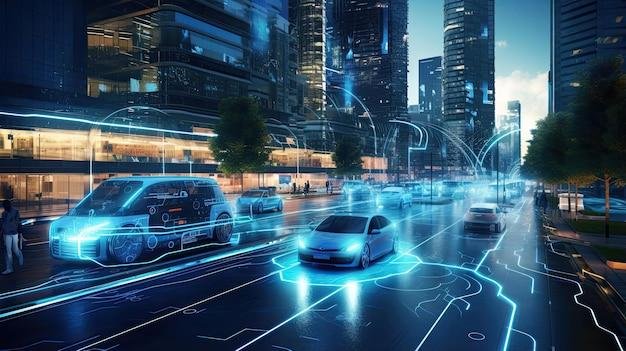Efficient travel and the safety of road users hinge upon effective traffic management solutions. With thorough planning and the implementation of a robust traffic guidance scheme, authorities can ensure that transportation systems operate smoothly, while reducing the potential for accidents and congestion. In this article, we delve into the essentials that compose an effective traffic guidance scheme, examining how such measures contribute to the seamless and secure movement of vehicles and pedestrians alike.
Understanding Traffic Guidance Scheme
The fundamental goal of a traffic guidance scheme is to provide clear, understandable instructions to those using the road. It encompasses the use of traffic signs, road markings, traffic signals, and other devices designed to guide travellers safely and efficiently to their destinations. When properly designed and implemented, such a scheme assists in managing traffic flow, particularly in areas of construction, high volume, or special events.
The Role of Detailed Planning
At the heart of any traffic guidance scheme is meticulous planning. Authorities must consider a plethora of factors, including traffic volume, road types, local infrastructure, and the specific requirements of any ongoing road works or events. The process involves assessing the impact on local businesses, residences, and public transport services, ensuring minimal disruption while heightening safety measures.
Components of Traffic Guidance Schemes
Several elements are indicative of a successful traffic guidance scheme. These include signage that conforms to international and national standards, clear road markings that delineate lanes and provide direction, and traffic signals that are timed and programmed in harmony with typical traffic flow. Additional components such as barriers, cones, and digital message signs act as supplementary devices that are instrumental during temporary disruptions or changes in regular traffic patterns.
Incorporating Technology
Advancements in technology play a pivotal role in modern traffic guidance schemes. Real-time traffic management systems can be employed to adjust signal timings to accommodate fluctuating traffic conditions. GPS data from vehicles and mobile devices also offer valuable insights into traffic patterns, aiding traffic planners in making informed decisions to optimise flow and reduce bottlenecks.
Communication with the Public
An essential facet of effective traffic guidance is the ability to communicate with the public consistently. Informing road users about the current and expected road conditions, any diversions or construction works, and projected travel times can help mitigate frustration and reduce the likelihood of accidents. Technologies such as mobile apps, websites, and variable message signs are crucial tools for achieving this communication.
Training and Competence of Traffic Controllers
Another element that underpins the success of a traffic guidance scheme is the proficiency of traffic controllers. Well-trained personnel who understand the intricacies of the traffic guidance system are essential to ensure compliance, safety, and the deft handling of emergency situations. Ongoing training and certification help maintain high standards of expertise and readiness among traffic control professionals.
Sustainability Considerations
Sustainability is a growing concern in traffic management. An environmentally responsible traffic guidance scheme focuses on reducing emissions and promoting alternative transport modes like cycling and walking. Introducing elements such as bike lanes, improved pedestrian crossings, and optimising public transport routes are ways in which traffic guidance can embrace environmental stewardship.
Evaluating the Effectiveness
For a traffic guidance scheme to remain successful, it must be subject to regular evaluation. Traffic patterns evolve over time due to changes in urban development, population growth, and the introduction of new transportation technologies. Authorities must therefore review and modify the traffic guidance plan periodically to ensure it remains fit for purpose and up-to-date with the latest safety standards and technological advances.
Emergency Response Integration
An often-overlooked but critical component of traffic guidance is its integration with emergency response plans. Traffic management systems need to have provisions for allowing swift access to emergency services. This not only includes the physical road design but also extends to procedures that quickly clear paths for ambulances, fire trucks, and police vehicles during crisis situations.
Collaboration with Stakeholders
A coherent traffic guidance scheme involves active collaboration with various stakeholders, including local government agencies, transport departments, road users, and the community at large. Public engagement is vital for gathering feedback and addressing concerns, ultimately leading to an optimised and accepted traffic management approach.
Cost-Effectiveness
While safety and efficiency are paramount, cost-effectiveness remains a significant consideration in the design and implementation of traffic guidance solutions. Investment in high-quality signage, durable road markings, and efficient traffic signal systems pays dividends in the long run by reducing maintenance costs and ensuring the longevity of the scheme.
Conclusion
Effective traffic management is not serendipitous; it results from the careful design and execution of a tailored traffic guidance scheme. Factors such as detailed planning, technology integration, public communication, personnel training, sustainability, regular evaluation, emergency response preparedness, stakeholder collaboration, and cost management all contribute to ensuring smooth journeys for millions daily. As cities continue to grow and evolve, the refinement of traffic guidance schemes will remain a crucial task for those responsible for keeping our roads safe and efficient.
Final Thoughts
In conclusion, the essence of a traffic guidance scheme lies in its ability to adapt to the changing needs of road users and the environment. It must continue to innovate and improve, considering the nuanced complexities of traffic management. By striking the balance between practicality and foresight, traffic authorities can sculpt a framework that stands the test of time, delivering smooth journeys in an ever-changing world.








